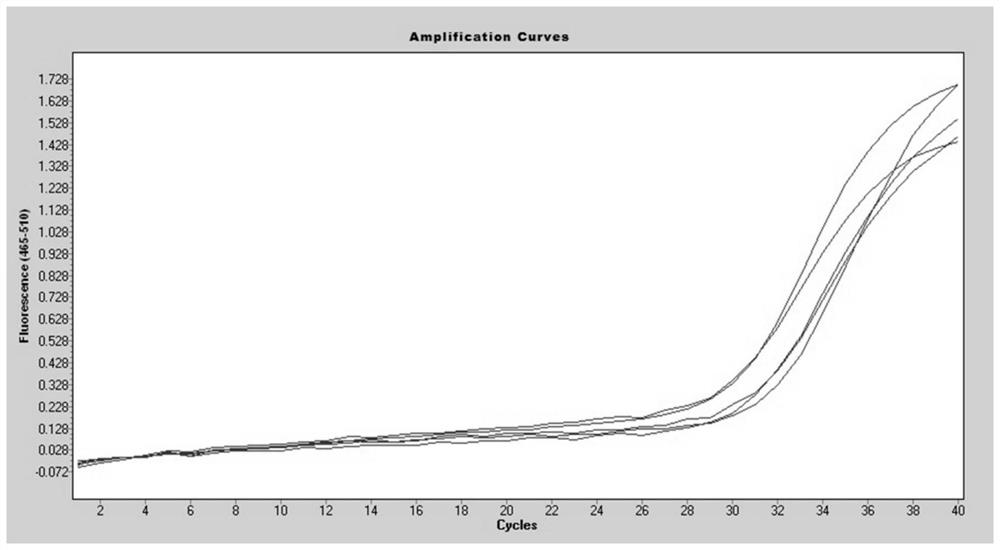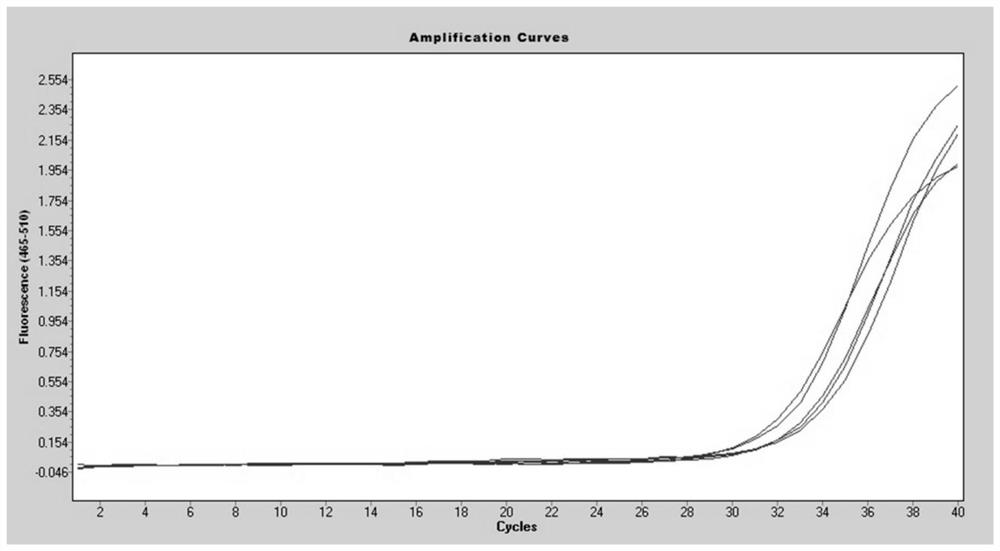Reagent and kit for vascular calcification diagnosis, and application
A diagnostic kit and vascular calcification technology, applied in the field of biomedicine, can solve the problems of limited accuracy, long time and high cost of PCR detection
- Summary
- Abstract
- Description
- Claims
- Application Information
AI Technical Summary
Problems solved by technology
Method used
Image
Examples
Embodiment 1
[0045] 1. Research object
[0046] A total of 66 patients diagnosed with coronary artery calcification by coronary angiography and dual-source CTC were selected from June 2013 to May 2014 in the First Affiliated Hospital of Nanhua University. Those with a history of myocardial infarction, history of coronary or peripheral arterial revascularization, hepatic and renal insufficiency, thyroid or adrenal dysfunction, abnormal calcium metabolism, chronic infection (active tuberculosis, COPD protracted stage), connective tissue disease, and tumor were excluded. , end-stage of immune system disease or mental illness and other diseases, etc. According to the Agatston method score (CACS) of coronary artery CTA, they were divided into coronary artery calcification group and control group, in which 8 patients with coronary artery calcification score equal to 0 points were in the non-coronary artery calcification group, and 8 patients with coronary artery calcification score greater than ...
Embodiment 3
[0093] The research objects, plasma collection and template preparation were the same as in Example 1.
[0094] 1. Configure the qPCR reaction system (Kangwei):
[0095]
[0096]
[0097] Wherein primer and internal reference are with embodiment 1.
[0098] 2. The amplification reaction program (three-step method) is set as follows:
[0099] Stage 1: Reverse transcription at 45°C for 10 minutes
[0100] Stage 2: Pre-denaturation at 95°C for 5 minutes
[0101] Stage 3: PCR reaction (40 cycles)
[0102] Denaturation 95℃ 15sec
[0103] Annealing 60℃ 30sec
[0104] Extend 72℃ 30ses
[0105] Stage 4: Melting curve analysis
[0106]
[0107] 3. Result Analysis
[0108] as attached Figure 6-9 As shown, the amplification curve of the internal reference is not clear, but the amplification curve of miR-32 is messy. It can be seen from the dissolution curves that the dissolution curves of both are non-unimodal and chaotic. It shows that this amplification system has ...
Embodiment 4
[0110] The research objects, plasma collection and template preparation were the same as in Example 1.
[0111] 1. Configure the qPCR reaction system (Kangwei):
[0112]
[0113] Wherein primer and internal reference are with embodiment 1.
[0114] 2. The amplification reaction program (three-step method) is set as follows:
[0115] Stage 1: Reverse transcription at 45°C for 10 minutes
[0116] Stage 2: Pre-denaturation at 95°C for 5 minutes
[0117] Stage 3: PCR reaction (40 cycles)
[0118] Denaturation 95℃ 15sec
[0119] Annealing 60℃ 30sec
[0120] Extend 72℃ 30ses
[0121] Stage 4: Melting curve analysis
[0122]
[0123] 3. Result analysis
[0124] as attached Figure 10-11 As shown, the amplification curves of internal references with different amounts of serum mixture added are acceptable, but there is no gradient difference. The amplification curve of miR-32 was messy, and the amplification value was high.
PUM
 Login to View More
Login to View More Abstract
Description
Claims
Application Information
 Login to View More
Login to View More - R&D
- Intellectual Property
- Life Sciences
- Materials
- Tech Scout
- Unparalleled Data Quality
- Higher Quality Content
- 60% Fewer Hallucinations
Browse by: Latest US Patents, China's latest patents, Technical Efficacy Thesaurus, Application Domain, Technology Topic, Popular Technical Reports.
© 2025 PatSnap. All rights reserved.Legal|Privacy policy|Modern Slavery Act Transparency Statement|Sitemap|About US| Contact US: help@patsnap.com



